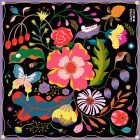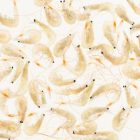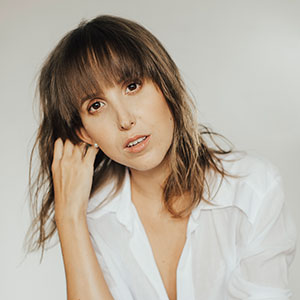‘’As a former social worker, it’s not surprising that my favorite subject has always been people. It is working with people that give me life.’’
Who is Patricia Lay-Dorsey? Not only has she worked as a social worker, artist, artistic therapist, protester, a peace committed activist and a recognized photographer in the industry, with features in international photography print and online publications such as The New York Times Lens blog, Lens Work, New Mobility, and Burn Magazine, she is also a woman who began taking self-portraits to help and demonstrate to society what life is like for a person with a disability – multiple sclerosis – from the inside:
‘’I have been fortunate to view the world through many different eyes, from different points of view to use different tools to share my message. All of that gives an organic wholeness to my art.’’
Photo taken by photographer Jennifer McClure – www.jennifermcclure.com
Should we call her brave? Talented? Sincere? There are many adjectives that can be used when detailing her personal and professional photography journey; today, we acknowledge her willingly undertaken work and her good judgment and sense of how to influence society in terms of using art and photography to focus the public’s attention towards stories and situations that are not covered on a daily basis, giving art a crucial role as a community game changer.
“Anything that excites me for any reason, I will photograph; it is not about searching for unusual subject matters, but making the commonplace unusual.”
What is your main current concern in society and how do you think has influenced art and photography?
‘’I see – especially here in the United States – an increasing comfort with hateful, bigoted and racist attitudes, words and actions. I believe the current president of the United States sets the tone for the country, and in this case, that is not good. I find myself and other artists of all disciplines responding by working on projects that embrace diversity and show the beauty of persons of different races, religions, ethnicities, sexual orientations, economic backgrounds and cultural heritage. In my own work, I have been focusing on the diversity of families here in Detroit.’’
‘’Art as a whole has allowed me to become more and more myself and to speak with my own unique voice.’’
A defining trait of Patricia’s photography work is her interest in giving an inside retrospective of her work as a humanist photographer by always wanting to get to know her subjects better – what they’re about, what their lives look & feel like – and afterwards, portraying it through her enormous talent.
‘’I want and need to understand why things are as they are. My intellectual curiosity informs my photography and artistic curiosity and vice versa. The products of the fusion of these two define how I see the world.’’
What’s your point of view on the importance of color?
‘’Ever since I got serious about art I have been drawn to color. But even before I was an artist, color had always meant a great deal to me. At the same time, I have worked in black-and-white with pen and ink and photography. There are times that black-and-white photography is the only way to say what you need to say. Sometimes your message is so subtle that it cannot tolerate the seduction of color.’’
New projects coming in the future?
‘’After years – decades actually – of being an artist who works on photography and other projects, I have found that these projects have drawn me into their orbit rather than my deciding to do them on my own. Very often I will take individual pictures that I don’t even imagine might become a project, but after a matter of weeks or months, it suddenly becomes clear that there is something connecting these images, some underlying bond that unites them. An example is what I am experiencing right now.
Why do you think the photography industry has been growing so much currently? And at what point of your career did you first saw this change?
‘’I believe this technological revolution we are going through is changing our ideas of art and artists. Now everyone who has a mobile phone is a photographer. You cannot go anyplace these days without seeing people taking pictures with their phones. No longer is photography an elitist art; it is open to everyone. At the same time, quality rises to the top. But not everyone has an artistic eye, and not everyone wants to take photographs that would be seen beyond Facebook or Instagram.
‘’In today’s world, it takes serious intentionality and commitment to pursue a career as a photographer. In some ways it is easier than ever, and in other ways it is harder. But one thing is certain: It is certainly different!’’
In the current market, what characteristics do you think you need to have to be successful in the future?
‘’As an artist and photographer, I cannot say that I put too much of my energy into thinking about the market, my definition of success is probably different from others. It does not depend on making money, being critically acclaimed, or even well known. It is much more personal than that.
The characteristics I believe are necessary for me to feel good about my photography work include getting out of my own way in terms of ego, being passionate about what I do no matter how it is received, and trusting that if I am true to myself my work will reflect that authenticity and speak to others.
My focus must remain on the process rather than the product. As with anything else, there are artistic trends that the culture deems worthy of interest and attention. I cannot be concerned with those trends. If I started creating art according to other people’s ideas of what is good, I would be lost. I must follow my own path and create the art that satisfies something deep within myself.
‘’As Robert Rauschenberg said, “Art is life, and life is art.” It is that oneness of being that, to my way of thinking, defines success.’’
Your current photography projects?
‘’After having been an inpatient for two weeks at a physical rehabilitation center in a Detroit hospital, I was discharged on February 14, 2018. Once at home again, I immediately entered a home healthcare program with occupational and physical therapists coming to work with me several times a week for the next two months. Throughout these months of hospitalizations and ongoing health struggles, I took and posted on Instagram photos with often painfully honest captions.’’
’Thousands of individuals from around the world followed my day-to-day photography journey and offered remarkable support and encouragement. I can’t imagine how I would have made it through without them.’’
“The week after I was discharged from the rehab center, I received an email from a photography gallery owner who had been following my progress on Instagram. In a follow-up phone call, he asked if I would be interested in exhibiting this work in a photo festival that he and his gallery put on every fall. I agreed and we are currently working together on preparing my photography project for exhibit. Since I had never intended these photos and captions to be seen anywhere except Instagram, it is a stretch for me to imagine exhibiting them as ‘art.’ It is also quite emotional for me to have to go back and relive a time that was very difficult.’’
‘’All I can say about this unexpected progression of events is that one never knows what will happen when you go public with your work. Not only that, perhaps the simple act of documenting a chapter of your life with sincerity and truth can take it beyond the personal and make it universal. One never knows how your story might resonate with those who view it.’’






What do you think?